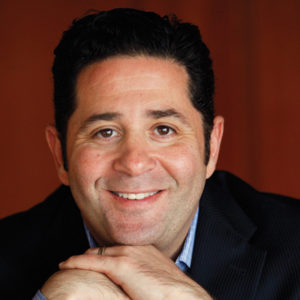 Admittedly, I’m a biased blogger. I love big ideas. And I am more than happy to celebrate big ideas even if my agency had no hand in creating them. Think of it as a form of largesse. Or jealousy. Either way, Revlon’s “Love is On” campaign meets all of my criteria for a big idea:
Admittedly, I’m a biased blogger. I love big ideas. And I am more than happy to celebrate big ideas even if my agency had no hand in creating them. Think of it as a form of largesse. Or jealousy. Either way, Revlon’s “Love is On” campaign meets all of my criteria for a big idea:
- 1) It’s emotional. What’s more emotional than love?
2) It’s relevant. One can certainly find an inherent connection between being attractive and the pursuit of love.
3) It works on multiple channels. This is perhaps the strongest argument for the beauty of this campaign. Lots of campaign ideas work well in advertising. But few translate equally well into social media. (If you run into me at a cocktail party, be sure to ask me about two national ad campaigns that were disasters on social media!) And fewer still can naturally integrate a charitable component.
So, yes, I love the “Love is On” campaign and it was my great pleasure to catch up with Benjamin Karsch as a result of his winning the Content Marketing Award from The CMO Club and find out the lovely story behind the campaign.
Drew: I’m a big fan of your “Love is On” campaign. Can you talk about the overall strategic thinking behind this initiative?
Revlon’s CEO Lorenzo Delpani believes that we must have an emotional connection with our consumers and that truly is the DNA of LOVE IS ON: it grows right out of the name Revlon.
Literally, L-O-V-E – those letters can be found at the heart of the word REVLON. And O-N, those letters are at the end of the word REVLON. LOVE IS ON is a mission of inspiring LOVE, the most powerful, positive human emotion and most powerful motivator. From the moment she puts on her makeup, we want our customer to enter the world of LOVE, where emotion, positivity and affection fill her heart.
Drew note: Another admission. I made a music video in the 80’s (very under the radar with friends as actors) to Robert Palmer’s song Addicted to Love which required me to listen to the song over 100 times. The result is Pavlovian now –whenever I hear the song, even if performed by another signer, I remember one of the most fun, truly lovely summers of my life that included meeting my future wife.
Drew: The “Love is On” microsite is filled with lots of “lovely” content. Can you talk about some of the elements (horoscopes, dating advice, video series, sweepstakes) and how these are working for the brand?
We have a number of unique and innovative initiatives supporting LOVE IS ON, speaking to women no matter at what stage of love they are – looking for love, falling in love or staying in love. We partnered with Refinery 29 to create Love Horoscopes, leveraging the insight that this type of content is some of the most engaging on their site. And to speak to women who are looking for love, we created a digital series in partnership with Cosmopolitan and Kristin Cavallari , where dating and beauty advice were provided and engaging stories were shared. We also created a “Dream Wedding” with Brides magazine, asking consumers to help us plan a special wedding for a very deserving couple. Most recently, we launched the viral video “Love Test,” which empowers women to leverage a simple daily beauty ritual to choose love and improve their love lives.
Drew: “Love is On” also includes a charitable component the Million Dollar Challenge. Can you talk about the thinking behind having a charitable component and how that is working thus far?
We were looking for a different, more innovative and modern way of fundraising and felt the new philanthropic platform of an online fundraising challenge to be attractive for two reasons: it allows us to give more directly to charities, and thereby contributing more funds, and it also allows us to expand our charitable reach beyond people located in just NY or LA. And we did just that: charities from all over the country got involved—in a major way—and it was really exciting watching them embrace the spirit of competition, right down to the last few minutes! The women’s health charities raised $2.75 million, with Revlon donating an additional $1.425 million over the course of the challenge for a total distribution of $4.18 million.
Drew: And of course, “Love is On” has a social component featuring Instagram pictures of lovers. Can you talk about the role social media plays in your overall strategy and how it is working so far? Any surprises?
Social media – across Facebook, Twitter and Instagram – has played an integral role in engaging our consumers with the LOVE IS ON messaging. We asked consumers to “Show us how you love #loveison” and the surprise has been the overwhelming response. Consumers have engaged with us in droves – we have received over 5MM submissions using the hashtag from consumers around the world. We have been able to push that content back out on our social platforms, as well as onto our billboard in Times Square.
Drew: “Love is On” is also the name of new fragrance. Was that always the plan to have a fragrance with the same name as your marketing campaign?Also I understand that you are targeting travel retail with this product — did that necessitate a new approach to either your marketing or your content?
Yes, naming our first fragrance in over 10 years after our brand mission, LOVE IS ON, was always the plan. You see, LOVE IS ON is not just a marketing campaign – it’s a mission, a movement and it’s in everything we do. Therefore, it only made sense for us the name to continue the message in our latest fragrance. Formulated to inspire love and intimacy, LOVE IS ON is the fragrance that is loved by women, and irresistible to men. And we are excited to offer LOVE IS ON eau de toilette in not only travel retail but across all of our usual channels.


 Hu-Friedy is a mouthful of a brand name which may or may not have been on the mind of Hugo Friedman when he founded his dental instrument company back in 1908. More than a century later, Hu-Friedy is a global leader in its category and yet, quite remarkably still completes 80% of the manufacturing process by hand. According to their website, “they meticulously mold, treat, and sharpen instruments to perfection, which is why we call them artisans.” And while their dedication to craftsmanship may be old school, their marketing is anything but.
Hu-Friedy is a mouthful of a brand name which may or may not have been on the mind of Hugo Friedman when he founded his dental instrument company back in 1908. More than a century later, Hu-Friedy is a global leader in its category and yet, quite remarkably still completes 80% of the manufacturing process by hand. According to their website, “they meticulously mold, treat, and sharpen instruments to perfection, which is why we call them artisans.” And while their dedication to craftsmanship may be old school, their marketing is anything but.